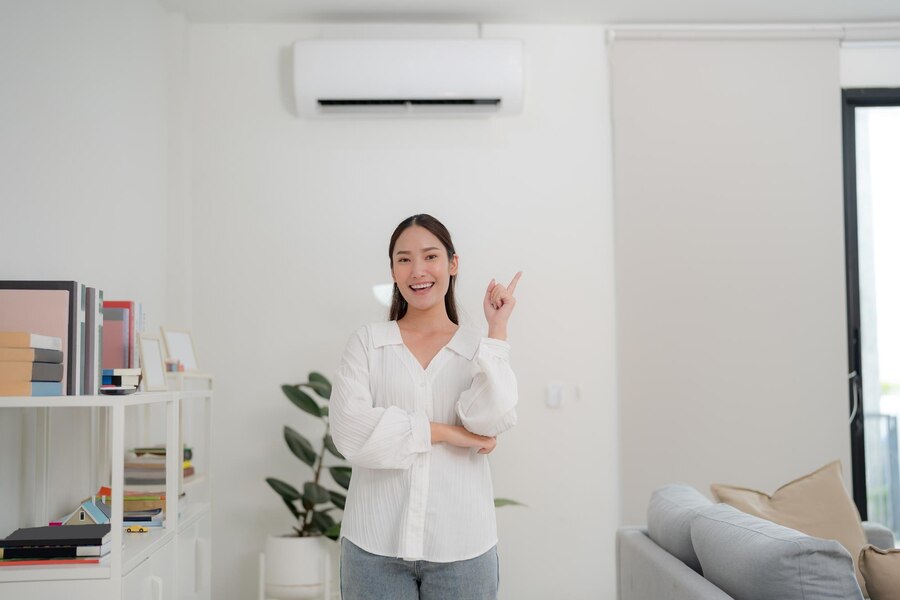
Proper ventilation is essential in maintaining good indoor air quality for a healthy and comfortable home environment. However, many homeowners are unclear about the importance of ventilation or may have misconceptions that could negatively impact the air quality within their living spaces. Understanding and correcting these misunderstandings is crucial to promoting a healthier home for you and your family.
1. Misunderstanding: Sealing Your Home Tight Improves Indoor Air Quality
While it's true that sealing your home can improve energy efficiency by preventing drafts and heat loss, it can also lead to inadequate ventilation and poor indoor air quality. A tightly sealed home may not allow for sufficient fresh air circulation, resulting in a buildup of pollutants and moisture. To maintain a healthy living environment, it's essential to balance energy efficiency with proper ventilation.
Consider implementing the following practices:
- Invest in a mechanical ventilation system, such as an energy recovery ventilator (ERV) or heat recovery ventilator (HRV), to expel stale indoor air and bring in fresh outdoor air.
- Regularly open windows and use exhaust fans in kitchens, bathrooms, and laundry areas to promote air exchange and prevent moisture buildup.
- Ensure your heating, ventilation, and air conditioning (HVAC) system is maintained regularly to optimize performance and air circulation.
2. Misunderstanding: Air Filters Alone Ensure Optimal Indoor Air Quality
While high-quality air filters in your HVAC system can effectively trap many airborne pollutants, such as dust, pollen, and pet dander, relying solely on filters may not be enough to maintain optimal indoor air quality. Air filters do not address many other factors that contribute to overall air quality, including humidity levels, ventilation, and volatile organic compounds (VOCs).
To improve your home's air quality beyond filtration, consider the following actions:
- Address humidity levels by using a dehumidifier or humidifier, as appropriate, to maintain a comfortable range of 30-50% relative humidity.
- Incorporate air-purifying plants into your home's decor to help absorb VOCs and other pollutants.
- Utilize an air purifier or air cleaner with activated carbon filters to target specific pollutants such as VOCs or smoke particles.
3. Misunderstanding: More Ventilation is Always Better
Increased ventilation can help dilute indoor air pollutants, but simply opening windows or increasing exhaust fan usage isn't always the most efficient or effective solution. Excess ventilation could compromise your home's energy efficiency, leading to higher utility bills, drafts, and potential issues in temperature regulation.
The key lies in finding a balance between adequate ventilation and maintaining energy efficiency. Some useful strategies include:
- Installing a mechanical ventilation system, like an HRV or ERV, designed to efficiently exchange indoor and outdoor air while minimizing heat loss or heat gain.
- Opt for a demand-controlled ventilation (DCV) system that adjusts the ventilation rates based on the home's occupancy and indoor air quality triggers, such as elevated CO2 levels.
- Properly seal and insulate your home to minimize drafts and maintain consistent temperatures while ensuring effective ventilation systems are in place.
4. Misunderstanding: Indoor Plants Can Replace Mechanical Ventilation Solutions
While incorporating air-purifying plants into your home can help improve air quality to some extent, they are not a substitute for adequate ventilation systems. Plants can absorb certain airborne pollutants and release oxygen, but their capacity to clean indoor air and control humidity levels is limited, especially in larger living spaces.
To ensure optimal indoor air quality for you and your family, consider a multifaceted approach that includes mechanical ventilation, proper HVAC maintenance, and additional air quality improvements, such as incorporating indoor plants and using air purifiers.
5. Misunderstanding: Portable Air Cleaners are a Substitute for Ventilation
Portable air cleaners can indeed be useful in targeting specific pollutants or allergens in your home. However, they should not be considered a substitute for proper ventilation or regular HVAC system maintenance. Portable air cleaners typically target only the air directly around the device, whereas proper ventilation helps promote healthy air exchange throughout your entire home.
To ensure comprehensive improvements in indoor air quality:
- Use a combination of portable air cleaners, proper ventilation, and HVAC maintenance to address your home's unique air quality needs.
- Regularly clean and replace air filters in both portable air cleaners and HVAC systems, as well-kept filters significantly impact their effectiveness.
- Consult with an experienced heating and cooling professional to review your home's ventilation and indoor air quality requirements and explore the most suitable solutions tailored to your needs.
Achieve Optimal Indoor Air Quality with Expert Solutions
Addressing common misunderstandings about ventilation and indoor air quality is vital to maintaining a healthy and comfortable living environment. By implementing the best practices discussed in this article, you can make informed decisions to improve your home's indoor air quality, ultimately providing you and your family a better quality of life.
When it comes to optimizing your home's ventilation and air quality, trust the experts at S.O.S. Heating & Cooling. As Salt Lake City's premier heating and cooling company, our experienced professionals are dedicated to providing customized, comprehensive solutions tailored to your unique needs. From Salt Lake City HVAC maintenance to specialized air purifiers in Salt Lake City, we're here to help ensure that you and your family breathe clean, refreshing air in the comfort of your home. Contact us today, and let's work together towards a healthier and happier living environment.
Explore Our Latest Insights and Updates in Plumbing Services

How to Solve AC Airflow Restriction in Salt Lake City

Why Your AC Makes Rattling Noises in Murray Homes

Troubleshooting AC Relay Switch Problems in Mt. Olympus






.avif)